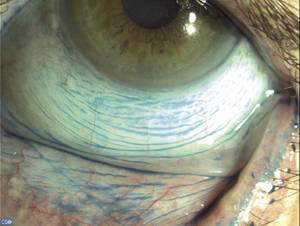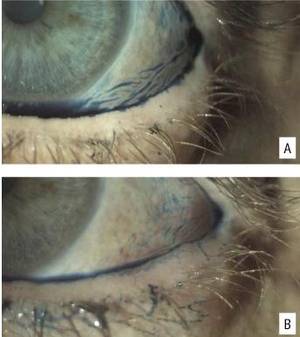Teardrop biomarkers, indicators of ocular inflammation
There are many pathologies that affect the tear and cause discomfort and irritation in the patient. One of these ocular pathologies is conjunctivotxalasia, characterized by the existence of redundant conjunctival plaques in the lower eyelid. It mainly affects older people and may be due to changes in old age that occur in connective tissue.
There are two theories that want to explain this phenomenon. According to one of them, aging is responsible for the changes that occur in the components of the lower eyelid, a theory that suggests that the presence of inflammation on the ocular surface can increase elastic degeneration. Thus, conjunctivotxalasia delays the process of renewal of the tear, which irritates the eye, as specific proteins accumulate that increase inflammatory activity and cause problems to patients such as irritation, drying of the eye and tenacious vision.
In our work, we took these factors into account and wanted to evaluate the effectiveness of a surgical treatment that consisted in removing the folds from the eyelids, taking a sample of tears before and after surgery and analyzing whether there was any indication of inflammatory marker (see attached bibliography), since previous studies showed that it was very important.

The study involved 12 patients who were in a critical phase of the disease, who did not respond to pharmacological treatment and who required eyelid surgery. Tears were taken before surgery and within a month to check the effect of surgery on inflammation of the skin of the eye. MMP-9 metalloproteinase was selected for biomarkers. It is an MMP-9 enzyme that activates other inflammatory substances called interleukins that destroy the tissues of the eyelid.
The analysis of tears showed that the concentration of the MMP-9 enzyme was significantly higher in patients with conjunctivocotxalasia than in those in control, and that the levels of this marker decreased much after surgery.
After five weeks of follow-up, all eyes undergoing surgery had soft, stable conjunctival skin again and epithelial defects improved in most cases.

In conclusion, we highlight the importance of biomarkers for eye skin pathologies in which samples can be obtained through non-invasive methods. The tear allows obtaining biomarkers of certain pathologies of the skin of the eye and serves to know the cause and response of certain treatments. These biomarkers indicate the biological processes that are altered by the disease, in this case for example, it is possible that the inflammation has a great influence on conjunctivotxalasia. The study has demonstrated through a quantitative method that the surgery was adequate, not only for the symptoms presented by the patient, which may be more subjective, but for the decrease in the concentration of a certain biomarker.






